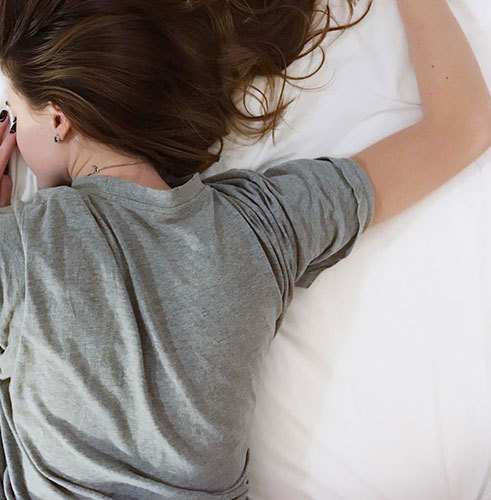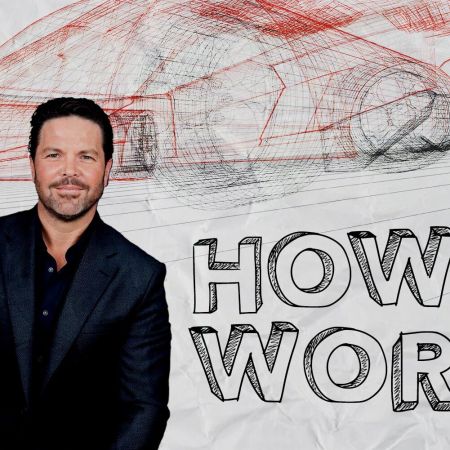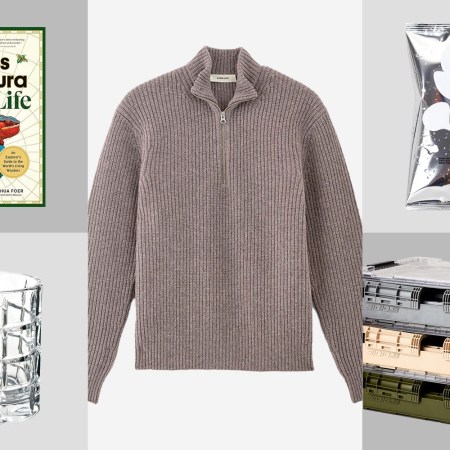“When looking at how to improve your sleep, it’s good to look at what good sleepers do.”
Common sense advice — if a bit voyeuristic.
Instead, for dozing issues, some people turn to technology. Which has its pros and cons.
With plenty of new slumber devices and ideas floating around and little consensus on how they work, we turned to two pros to get the lowdown on sleep tech:
- Robert Soler, a former NASA scientist who helped design and build the first LED light for use on the International Space Station (ISS) to optimize astronaut sleeping patterns. Currently VP of Research at BIOS Lighting.
- Martin Reed, MEd, CHES®, CCSH, a certified clinical sleep-health expert, the founder of Insomnia Coach, an affiliate member of the American Academy of Sleep Medicine and a certified health-education specialist.
Herein, their uncensored take on 12 new pieces of restful technology.
Turns out hacking good sleep is difficult … but not a pipe dream.
The tech: Weighted blanket
Example: Reviv
The claim: “An eco-friendly weighted blanket that uses nanotechnology to help you chill like a panda. In addition to reducing levels of cortisol (the body’s stress hormone), weighted blankets have been proven to increase levels of melatonin and serotonin, which promote sleep and decrease blood pressure.”
Reed’s take: The pressure and sensation of lying under a weighted blanket may promote calm and encourage relaxation — this might improve sleep quality. A study published in 2015 evaluated the effectiveness of weighted blankets as a way to improve sleep among chronic insomniacs. Those who used a weighted blanket said they found it easier to fall asleep, enjoyed a better quality of sleep and woke feeling more refreshed. [However] objective sleep data obtained from scientific devices found little in the way of significant differences in the sleep of those with insomnia who used a weighted blanket and those who didn’t, other than less movement during sleep. The authors of the research suggested that for a weighted blanket to be effective, the weight should be evenly distributed and the blanket should weigh more than 10% of your body weight.
The tech: High-tech fabrics
Example: Sheex
The claim: “High performance fabrics transfer body heat up to 2X more effectively than traditional cotton allowing you to keep calm and cool throughout the night.”
Soler’s take: Temperature has a strong impact on circadian rhythms and sleep. I would be interested to see how this compares to simply using less blankets; I would guess that it would have a good impact on sleep compared to traditional blankets.
The tech: Over-the-counter vitamins/supplements
Example: The Vitals
The claim: “Made with melatonin, L-theanine, lavender and chamomile, all targeting calming night’s sleep without added drowsiness.”
Reed’s take: Certain vitamins and supplements may help improve sleep if your sleep is being disrupted by a nutrition deficiency. Melatonin is a hormone that plays an important role in sleep regulation — typically, melatonin levels increase at night as a signal that it’s time to sleep. Unfortunately, although melatonin supplements have been found to help reduce the effects of jet jag, there is insufficient evidence that they are an effective treatment for insomnia.
The tech: Sleep trackers
Example: Fitbit Alta HR
The claim: “Automatically track your sleep duration and consistency. Then wake up peacefully with a silent alarm. Using heart rate, Alta HR shows your time in light, deep and REM sleep to help you understand your sleep quality.”
Reed’s take: For healthy sleepers, sleep trackers can provide some useful information about sleep. Although devices that measure heart rate can make them more accurate when it comes to tracking sleep, unless brainwaves are being monitored, the sleep stage someone is in cannot be accurately determined. If you are already worried about your sleep, closely monitoring it every night can increase anxiety and actually make sleep more difficult.
The tech: Sound/white noise machines
Example: Adaptive Sound Technologies ‘LectroFan EVO
The claim: “Uses state of the art technology to generate dynamic, realistic fan sounds, white noises and ocean sounds to help block intrusive noises so you can relax, concentrate and fall asleep easier.”
Soler’s take: White noise is important for eliminating rumination (your mind running all night). Pink noise has been demonstrated to be better than white noise. I’ve seen apps that do this for a small fee (less than $5).
The tech: Music via bone conduction
Example: Dreampad
The claim: “Works with your body’s natural conductivity. Music and sound waves travel via bone conduction, drifting you off to sleep … and only you can hear it.”
Expert take: Not much discussion here, although Soler notes it’s “interesting for couples.”
The tech: Wearable/Low-frequency pulses
Example: DreamOn
The claim: “Each state of mind (awake, light sleep, deep sleep, etc.) has a unique signature — commonly known as a brainwave. Entrainment is when a brainwave mirrors the pattern of an external signal. By emitting the low-frequency signal of deep sleep, DreamOn encourages your brain to replicate that signal, sending you into deeper sleep, faster.”
Expert take: Again, not much discussion here. Soler does say he “hasn’t seen any research supporting this.”
The tech: Music designed for meditation/sleeping
Example: Brain.fm
The claim: “Music designed for the brain to enhance focus, relaxation, meditation, naps and sleep within 10-15 minutes of use.”
Reed’s take: Research suggests that listening to slow-tempo music can improve sleep quality. Listening to consistent and repetitive audio can help distract a racing mind and help you relax at night. If you are relaxed when you are in bed, you are more likely to sleep.
The tech: Wearables / pulsed electromagnetic field therapy
Example: Bellabee
The claim: “The Bellabee uses PEMF (pulsed electromagnetic field therapy) stimulation to soothe the brain or to wake it up, depending on the need. Simply set the program, place the Bellabee around the back of your head and let the magic begin!”
Soler’s take: Sounds too invasive for sleep. Sleep is about comfort, I would never use this or recommend to anyone.
The tech: LED Smart lights
Example: C by GE Sleep
The claim: “This Bluetooth-enabled, voice controllable smart bulb has three color settings that support your sleep/wake cycle.”
Soler’s take: Light is core to circadian rhythms and thus sleep. The point is to provide brighter days and darker nights. Spectrum and spatial distribution is key to achieving this. This product may have limitations, but the concept is good.
The tech: Climate control for the bed
Example: BedJet3
The claim: “BedJet’s patented biorhythm temperature technology enables programmable temperature control for every hour of the night to help you get to sleep faster and stay asleep longer. BedJet3 obsoletes your noisy alarm clock by hacking into your body’s natural biorhythm wake triggers, to wake you up gently and incredibly refreshed.”
Reed’s take: There may be some benefit here if you share a bed and one bed partner sleeps hot while the other sleeps cool. However, a far cheaper alternative would be for the partner who sleeps hot to wear fewer (or no) clothes to bed and sleep under fewer blankets, and for the partner who sleeps cool to wear a few more layers.
The tech: CBD
Example: PureKana
The claim: “PureKana full-spectrum CBD extracts also contain other beneficial cannabis compounds like terpenes and phytocannabinoids … these important compounds have been linked with sleep aid properties, muscle relaxing characteristics and even the ability to help relieve pain.”
Reed’s take: There are many anecdotal reports of CBD having a beneficial effect on sleep, but there isn’t much in the way of scientific evidence to support these reports. Interestingly, a very small study from 2004 study found that 15mg of CBD appeared to act as a stimulant.
In the end, Reed offers this recommendation.
“When looking at how to improve your sleep, it’s good to look at what good sleepers do,” he says. “Are they relying on sleep technology to get a good night of sleep? Most aren’t. That’s because those who sleep well usually do so because they don’t think too much about sleep, they don’t analyze their sleep and they don’t look for crutches to help support their sleep.”
Instead, he suggests using a human sleep coach (or other qualified healthcare professional) or treatment, specifically cognitive behavioral therapy for insomnia (CBT-I), which “helps address the thoughts and behaviors that are often to blame for ongoing sleep disturbances, doesn’t require any ongoing purchases or gadgets and is the most effective long-term treatment for insomnia.”
Two apps grounded in evidence-based CBT-I techniques include Sleepio and SleepStation.
Download and sleep well.
(For more on sleep tech and sleep hacks, go here.)
Photos: (Top to bottom) Warner Bros.; Reviv; Hims; DreamOn; BedJet
Whether you’re looking to get into shape, or just get out of a funk, The Charge has got you covered. Sign up for our new wellness newsletter today.
























